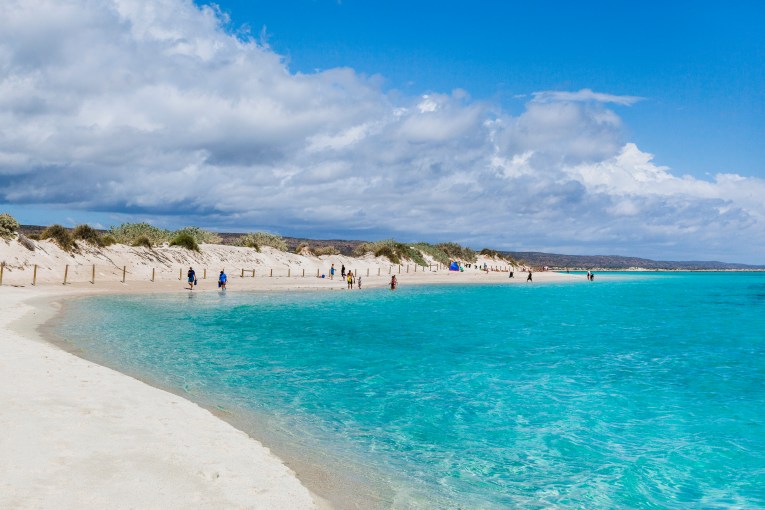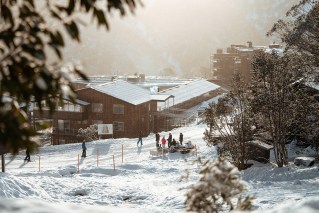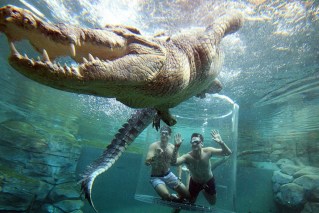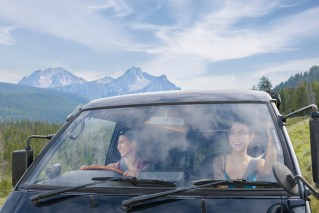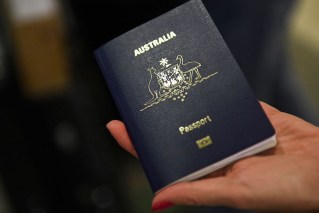How to spend an exhilarating weekend in Launceston

There’s something thrilling about that first deep breath of clean Tassie air, after flying down from the mainland. The chaotic Melbourne that I left just over an hour ago feels a world away on this, my third visit to Tasmania, but my first to Launceston. Friends and family have raved about the food and architecture for years, and I’m excited to finally see what it has to offer.
Leaving the airport, rolling hills of beige quickly give way to the surprising sprawl of the city, centred around a compact CBD whose mid-rise buildings sprout up from the suburbs like un-mowed sprigs of grass. A 20-minute drive and the holiday truly begins, which is ideal, with just two days on the ground.
Day one
I’ve arrived famished, which is no problem, given Launceston’s status as a UNESCO City of Gastronomy. With a vibrant food culture that rivals Melbourne’s, albeit on a smaller scale (population: 85,000), there are rich pickings for breakfast. I make a beeline for Tatler Lane by Sweet Brew, an airy warehouse-style cafe with a delicious vegetarian menu ranging from classics like smashed avocado and omelettes to more interesting dishes like green shakshuka and biriyani-style rice bowls.
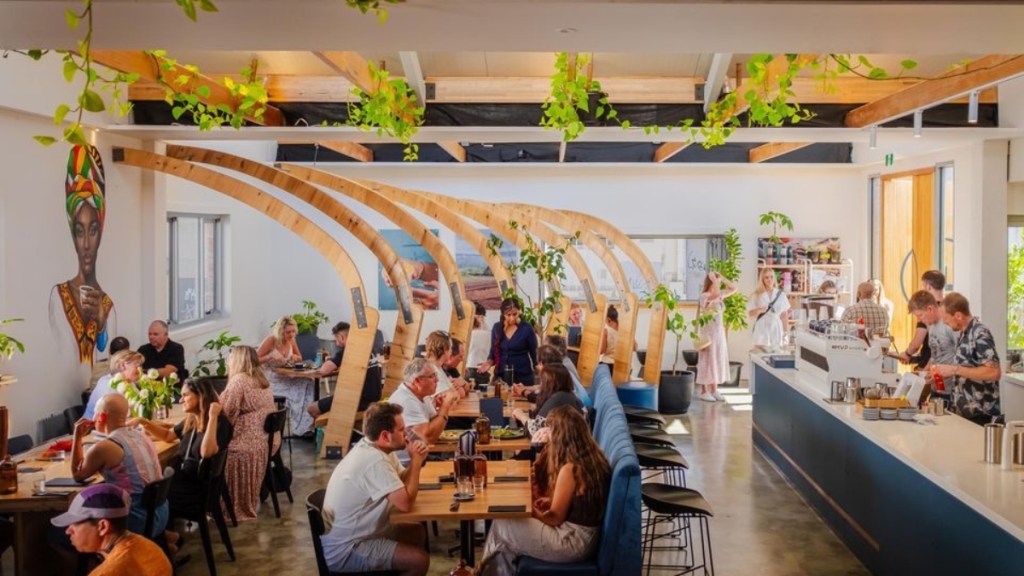
Soak in the uplifting atmosphere at Tatler Lane by Sweet Brew. Photo: Supplied
Walking off the generous meal, I stop in at Design Tasmania, founded in 1976 to foster and celebrate local designers. The centre’s wood collection – the only one of its kind in Australia – challenges expectations of how furniture ‘should’ look with curved, spine-like coat racks, cubist bookshelves and wooden speakers inspired by coral.
As the third oldest city in Australia, Launceston has an eclectic mix of buildings, from 1800s heritage sites to 1960s brutalism, and even a hotel pulled straight out of the European Alps. But I suspect my afternoon with Kooparoona Niara Tours will put that history into perspective.
Led by Trawlwoolway man Greg Murray, the tours focus on culturally significant sites across the region, including our first stop: Cataract Gorge, a 15-minute drive to the CBD’s west.
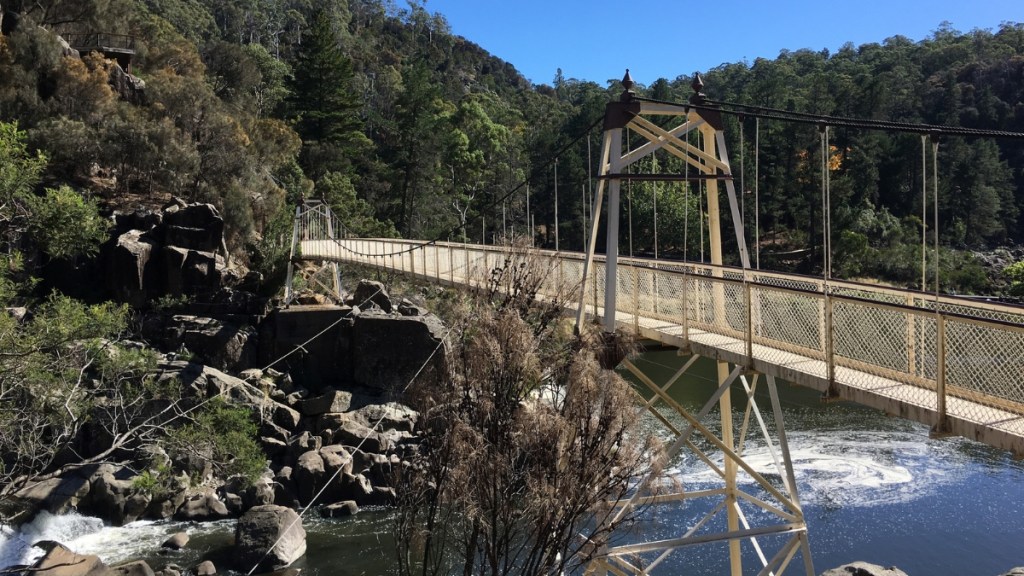
The 65-million-year-old Cataract Gorge, carved by the South Esk River. Photo: Getty
We descend the hill on foot, past the historic chairlift and onto the trail surrounding the calm lake. Stopping at a white flag iris bush – also known as snake lily – Murray pulls out a few long stems, encouraging us to taste them. Sour and peppery, the plant makes you salivate, which can soothe feelings of dehydration. It’s also a strong material for making string and, lastly, it flowers at the same time as peak snake season, making it a useful reminder to exercise extra caution.
The Gorge is dotted with these and other plants, Murray stopping now and then to teach us of their properties and importance in the Tasmanian Aboriginal People’s way of life.
The sound of crashing water becomes louder, as we reach the Alexandra Suspension Bridge that spans the Gorge’s waterfall. Making our way across, the shake and swing of old planks is a little nerve-racking, particularly when we stop halfway to gaze at the ravine. Ancient pillars of rock emerge from the river that carved this natural wonder, with pockets of trees connecting the gorge to the sky. It’s breathtaking, but definitely a comfort to make it across to solid ground.
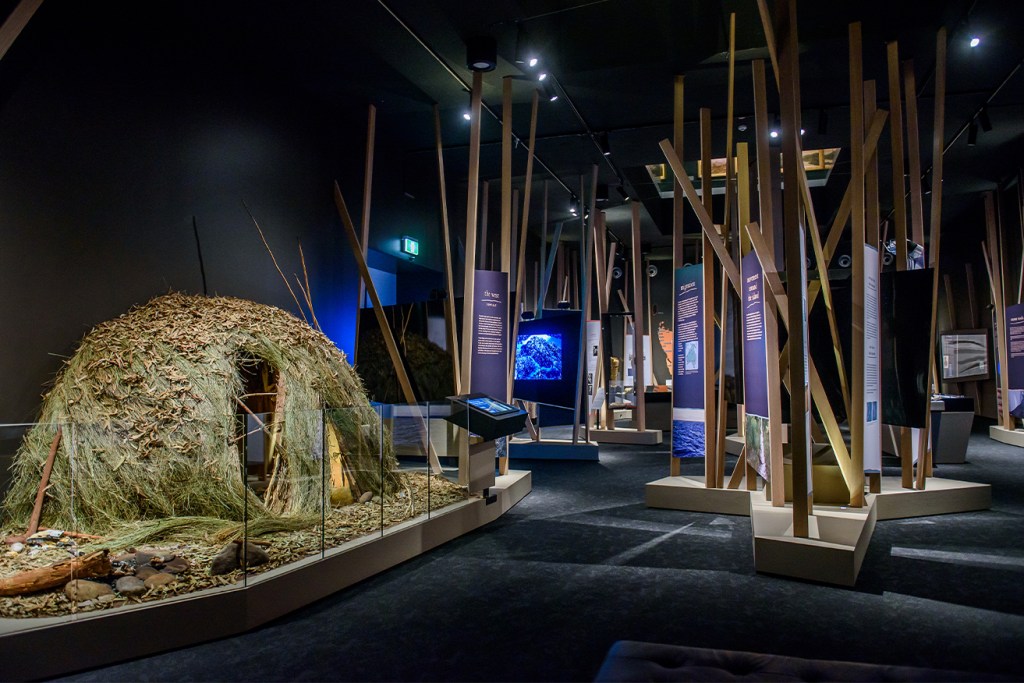
The First Tasmanians: our story, a permanent exhibition at Launceston’s Queen Victoria Museum and Art Gallery. Photo: Supplied
From there, our next stop is back in the CBD, at the Queen Victoria Museum and Art Gallery where Greg guides us through ‘The First Tasmanians’ exhibition. You don’t need a guide to visit, but we feel privileged to hear stories from someone who personally knows those involved in curating the exhibition, and who is so passionate about preserving and sharing his people’s ways of life.
We cap off a big day by heading to Stelo at Pierre’s, an intimate – and packed – Italian restaurant with a decadent menu, featuring tender wagyu, homemade ravioli with locally-grown hazelnuts, and freshly-caught fish. I settle on the stunning pumpkin arancini and gnocchi Bolognese, to no regret.
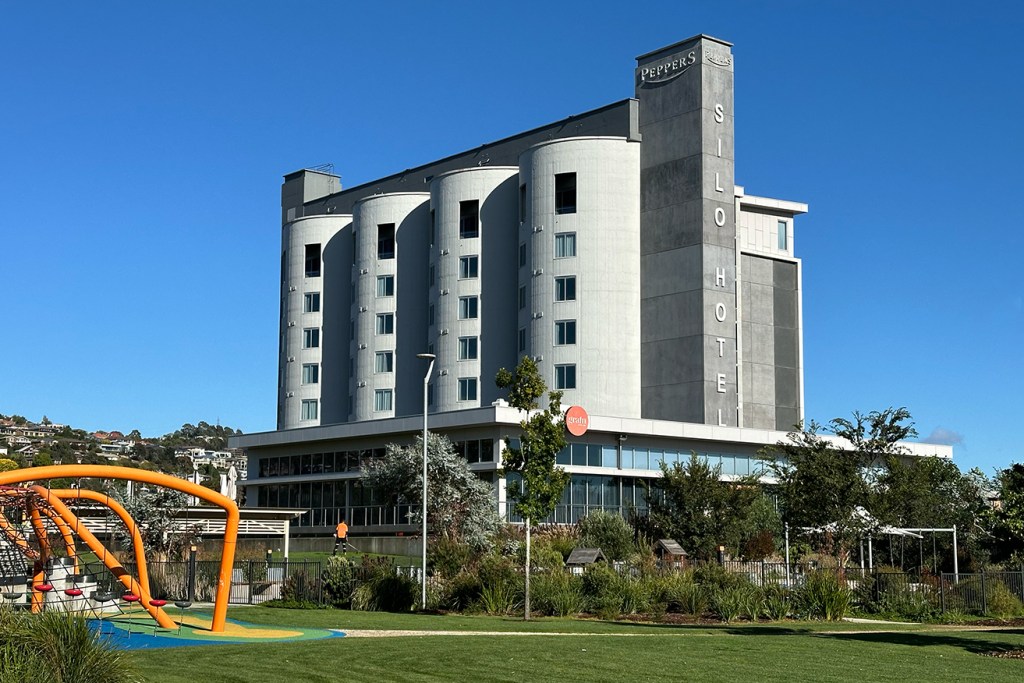
The cleverly repurposed grain storage of Peppers Silo Hotel.
It’s a welcome 20-minute stroll to our hotel, Peppers Silo, where we’re greeted by Archie, the resident black Lab who welcomes every guest who checks in. Perched on the bank of the Tamar River, the hotel is quietly luxurious with spacious rooms built into heritage grain silos, and it’s the perfect spot to unwind after a busy week.
Day two
We begin the day slowly with coffee at the hotel’s café, Grains of the Silo, before heading to our nearest Bread + Butter – a local bakery and butter factory (the clue’s there in the name), with three locations in Launceston. After many minutes of staring at their bountiful pastry cabinet, we settle on their walnut croissants and are delighted to discover that they’re perfect mix of flaky, nutty and buttery goodness.
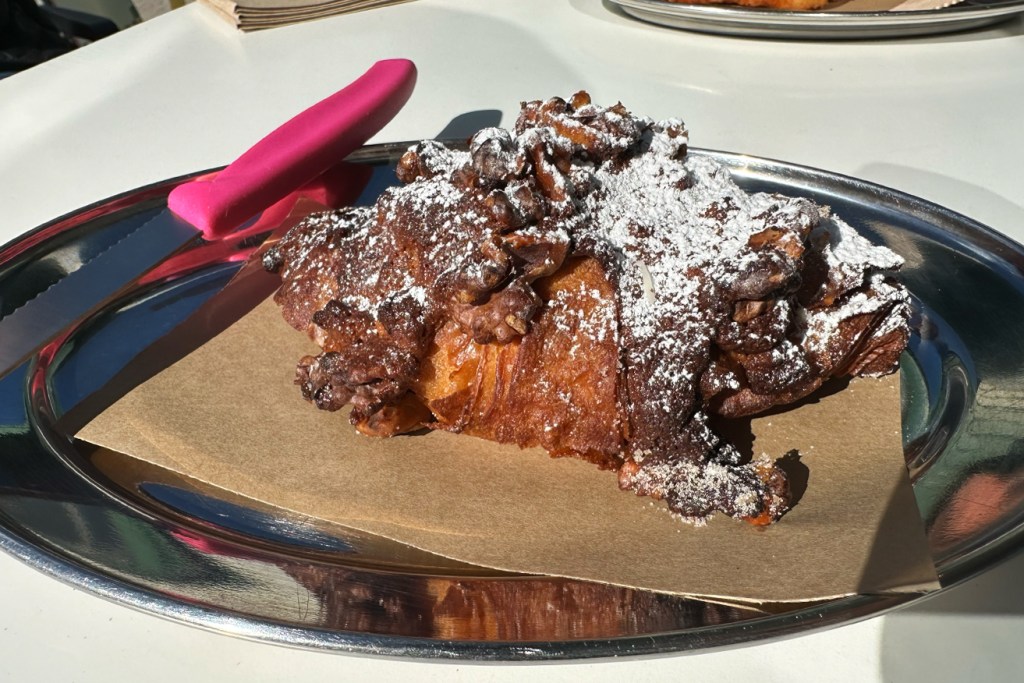
Perfection on a plate, at Bread + Butter.
Today, we’re heading further afield, to explore the Tamar region. A few hours north of Launceston, it’s made up of East Tamar and West Tamar, with the brackish Tamar River flowing between. The region is large, so we hire a car and enjoy meandering along the scenic route via seaside towns, like Bridport on the coast of the Bass Strait.
It’s also well worth checking out the many farmgate destinations in the area, which is known for apples, cherries, dairy products, nuts, wines and ciders. To help craft your trip, the Discover Tasmania and Visit Northern Tasmania websites have free guides available.
Up next is Derby, a former tin-mining town turned mountain biking hot spot, where we take a seat on the veranda at The Hub, enjoying a lunchtime pizza and watching the world go by.
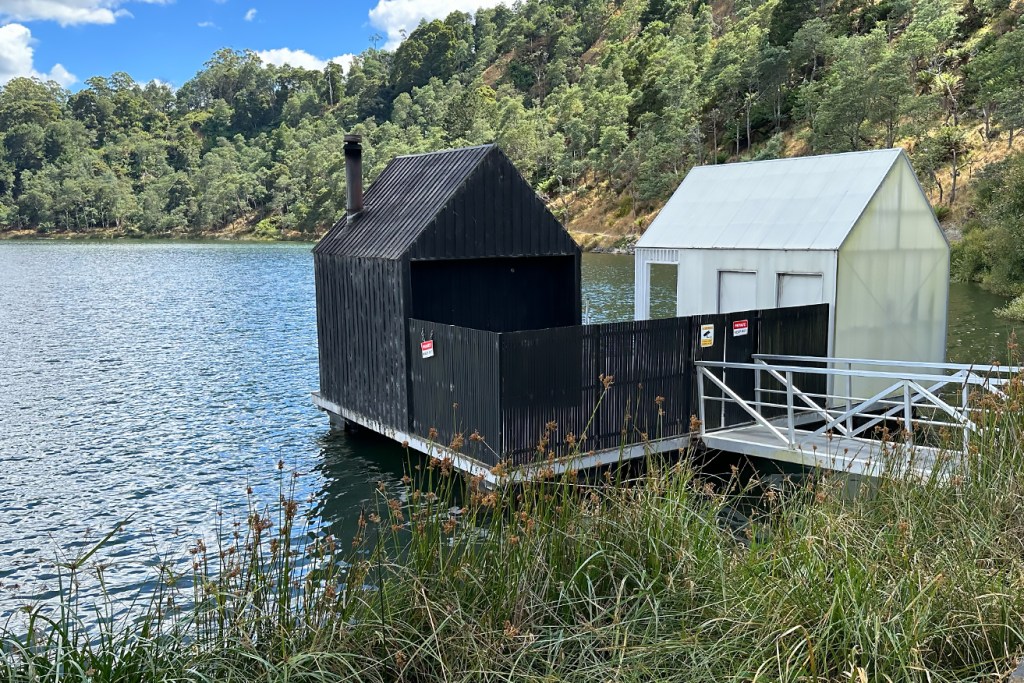
Derby’s tranquil Floating Sauna.
The afternoon’s activity is the Floating Sauna, on nearby Lake Derby, which is considered an excellent way to relax after (or, in our case, instead of) a bike ride. It’s completely off grid, so we’ve packed everything we’ll need, including swimmers, towels, water and a change of clothes.
The journey towards tranquillity starts with a 10-minute walk over a bridge and through bushland, before a sandy outcrop of scrubland emerges next to a lake. Attached to a small pier, the Nordic-style black wooden sauna hut and separate change room rest on a floating pontoon, like little houses over the water.
Gently rocked by the waves beneath, the small sauna is a place to sweat away your worries in 60º heat, while gazing out onto the tree-ringed lake from the structure’s large window.
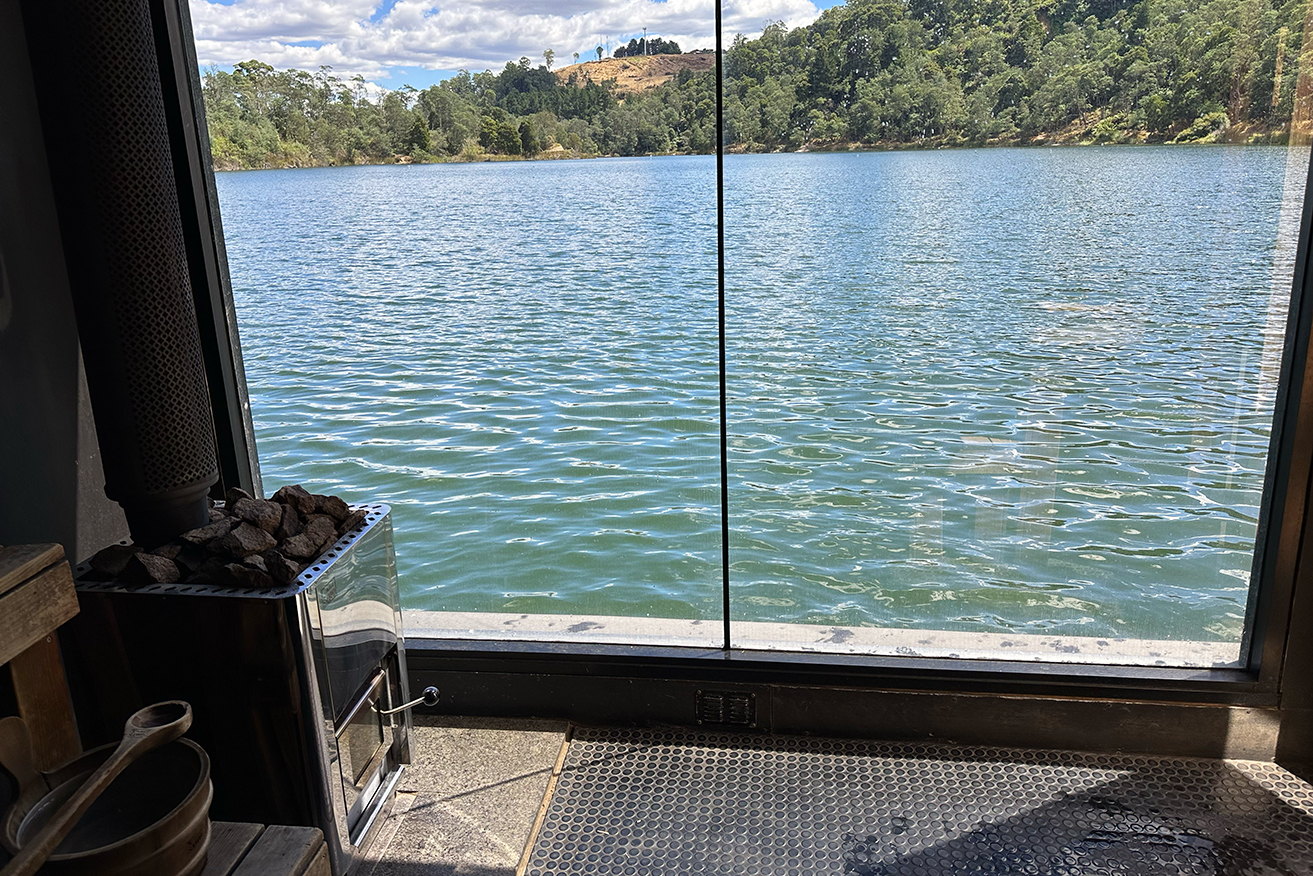
The sauna’s large windows are perfect for watching the lake’s ducks swim by while you warm-up.
Once you’re as hot as you can handle, you step out onto the pontoon and dive into the lake to cool off. Visiting in February, the water temperature is around 20ºC, though the lifeguard informs us it reaches a very refreshing 3–6ºC in winter.
It’s a daunting prospect, during which you question everything – from how cold it will feel, to the best method to hop in. But once through that mental barrier, it’s an exhilarating experience that awakens the senses and clears the mind as your entire focus shifts to how your body feels.
After five plunges, I’m energised to my bones.
As the day and trip draw to a close, we head back to Launnie (as the locals call it) for dinner at Havilah, a local favourite wine bar with a small menu that’s done incredibly well. Highlights are the bruschetta on toasted – nearly burnt – focaccia with a delightfully acidic sauce; homemade pappardelle with creamy zucchini ragu; and grilled squid with citrusy potatoes.
Launceston may be a small city by mainland standards, but with its surrounding Tamar region, it has so much to offer, both indoors and out. If you’re looking for a break from daily life, it’s the perfect place to rejuvenate with good food and great experiences. After two packed days, I’m feeling refreshed and ready to get back to chaos of Melbourne life.
The writer travelled to Launceston courtesy of Booking.com.









